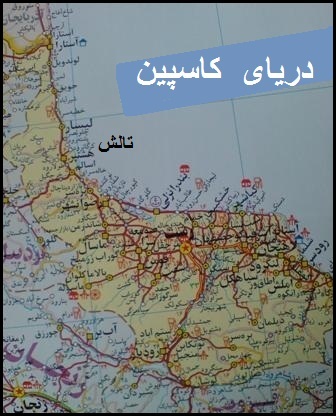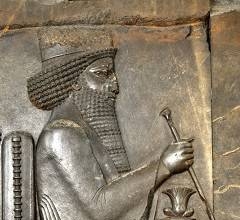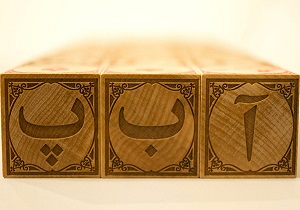A look at Avesta and Talshi languages
A look at Avesta and Talshi languages

In this article, at the beginning, a brief look at Avesta and Talashi languages is given, and at the end, a number of Avesta and Talashi words are given in the form of a comparative comparison. .
Northwest Iranian languages :
Northwestern languages and dialects are derived from the dialects that existed in the northern and northwestern parts of the Iranian plateau in ancient times. ( Mad area ) have been popular . Avestan language ( New Avesta language ) It also belongs to the northwest in terms of its main characteristics . The dialects that were common in this area in the Middle Ages are called Parti . Some of these dialects are recorded in the writings . At the end of the middle period, the southwest dialects completely replaced the northwest dialects ( Material and party ) took it in Khorasan and in central Iran . The old dialects have remained separate only in some rural areas . However, in the western and northwestern parts of the Iranian plateau, in Kurdistan and Azerbaijan, and on the shores of the Caspian Sea, a large number of northwestern Iranian dialects remain. . Despite the fact that centuries ago ( in Azerbaijan, Iran ) Turkish language has taken the place of these dialects and in some other regions Farsi has replaced them and thus the area of their spread has been gradually limited, still in our time a significant number of languages and dialects in this region are the tail of the northwestern branch. . These languages and dialects are Kurdish ( with its dialects ) , Zaza , Talshi ( with its dialects ) , a number of dialects of western Iran and Iranian Azerbaijan, Gilki and Mazandarani . Many dialects of central and western Iran and several dialects of Fars province ( Seondi ) They are also the remnants of Iranian dialects in the northwest . Balochi also belongs to the Northwest Iranian languages . Its prevalence in Baluchistan, far from the center of northwestern Iranian dialects, is the result of the migration of Baloch tribes to the southeast in a relatively recent period. . (۱).
Avestan language :
( Book ) Avesta is a very rich linguistic material . However, the study of this very important document for linguistic research has many problems . Avesta is a collection of sacred books, containing religious hymns and institutions of Iranian-speaking peoples in the ancient world . Its different parts were composed in different periods and regions and among different Iranian-speaking tribes and peoples . Its oldest parts ( In terms of content ) , that is, hymns written in praise of nature gods ( یشتها ) , were probably written in the second millennium BC . (۲).
Before, they had a difference regarding the Avesta language . Some thought it was from the east and others from the northwest of Iran . Since ancient times, due to the existence of the Achaemenid cuneiform lines and their comparison with the Avesta language, it has been proven that the sacred language does not belong to the southwest of Iran. . Recently, due to the lines in Turfan ( Turfan Valley is located in the Tian-šan mountain region in northeastern China's Turkestan . A part of Shapurgan Mani's book, often called "Shapurgan" by Arab and Iranian historians, was found in the mentioned valley. ) It was found that the Avesta language is completely different from the Soghdokhton or Eastern Iranian language . Therefore, today there is no doubt that the Avesta language belongs to the Maghreb of Iran . (۳).
Talshan and Talshi language :
Strabo, a well-known Greek scientist who wrote his book on geography two thousand years ago, in a discussion of (( Arturopathic medicine )) whose desire is present-day Azerbaijan, the mountain tribes there are named as such : Kortian, Amardan, Taporan, Kadosian . Of these four tribes, the first three are known and there is more or less knowledge about each of them . However, there is no mention of the Kadusians or Kadusians, who, according to the same scholars, were a large, powerful and famous tribe. . (۴).
Girshman writes in the history of Iran : Darius II ( 424-405 BC ) At the end of his life, he led the battle against the Cadusians and died shortly after, leaving the crown to his eldest son, Ardeshir II. . ( Between Ardashir II 405-359 BC, there was a war with the Kadusians, which did not have any particular result . ) Ardeshir III ( 359-338 BC ) With the utmost determination, he suppressed the Cadusians and put down the rebellion of the satraps . (۵).
It is undisputed that the settlement of the Kadusians was in the mountains of northeastern Azerbaijan, where the Talshan settlement is now. . It should be said : Neither the Kadusians have disappeared, nor have Talshans come from somewhere else to replace them . These Talshan are the children and survivors of the same Kadusan and the name (( attempt )) No longer a name (( Kadus )) is . (۶).
The Talshi language, within the northwestern group of Iranian languages, has a certain characteristic, especially in terms of vocabulary, which surprised the first people who were interested in this language. . Although, on the contrary, Khanikov calls this language "dialectic." … He knows exactly the same Gilki dialect ! In fact, the Talshi language is an intermediate language between Gilki and Tati, which is closer to Tati, and the language of Tati Kolor is easily learned by the Talish of Shanderman and vice versa. . (۷).
Talshi is prevalent in the Republic of Azerbaijan, in the Lankaran plain and in the mountainous areas west of it . Outside the borders of the Soviet Union ( Former ) , attempts in areas in the northwest of Iran, on the coast of the Caspian Sea and on the border between Iran and the Soviet Union ( Former ) is also common . The number of Talshi speakers in 1976 was around 220,000, of which 15,000 were in the Soviet Union ( Former ) have been residents . Talshi Tirmeh is one of the north-western Iranian dialects that were popular in Azerbaijan in the past . The couplets that were obtained in the Ardabil region and date back to the 10th century / They belong to one of these dialects and were written in the 16th century . Analysis of these couplets ( By B.V. Miller ) It has been shown that the Ardabili dialect in the 10th century / The 16th has features that make it very close to the current effort . (۸).
Except Azari Turkish, the rest of the languages and dialects of the region belong to the northwestern Iranian language family . In the mountainous regions of the humid area, Talshi is spoken in the western part and Galshi is spoken in the eastern part . But in some cases, the case is more ambiguous, for example, in addition to the mountains, there is also a dialect in the coastal plain ( Tongue ) Talshi is widespread from Razvanshahr onwards, but in the north of Kerganrud, Turkish Azari has gradually taken its place. . The trend towards Turkish language in Talash region, which increases year by year, is one of the main characteristics of the language situation in this northern part of Gilan province. . (۹).
Comparative comparison of words from Avestan and Talshi languages :
۱- That, that side, there : Avestan : Ava - ava / Talshi Astara : Ava - ava, ayo - ayo / Talashi Rezvanshahr : Avar – avar, Agni – ageny /
۲- from : Avestan : اَزِم – azam / Talshi Astara : اَز – that / Talashi Rezvanshahr : اَز – that /
۳- Eye : Avestan : Aş - aš, eyes - çašman, always - daēman / Talshi Astara : چَش – cup / Talashi Rezvanshahr : چَش – cup /
۴- what : Avestan : Ahma - ahma / Talshi Astara : His mother - ama / Talashi Rezvanshahr : His mother - ama
۵- Useless, worthless : Avestan : Adara - Adara / Talshi Astara : Hadara - hadara / Talashi Rezvanshahr : Dadar - dadār /
۶- fat : Avestan : Azutay - āzutay, Pivah - pivah / Talshi Astara : Pi – pi / Talashi Rezvanshahr : Uzyna - uzyna /
۷- bull : Avestan : uxšan / Talshi Astara : विशन – veshan / Talashi Rezvanshahr : Vishan – veshan /
۸- knife, knife : Avestan : Kareta - kareta / Talshi Astara : Korda - Korda / Talashi Rezvanshahr : Karda – kārda /
۹- Fountain : Avestan : Khan – xan, Khan ni – xanny / Astara's effort : Huni - huni / Talashi Rezvanshahr : Bloody – xony /
۱۰- the night : Avestan : Khashab – xšap / Talshi Astara : شَو – seam / Talashi Rezvanshahr : all /
۱۱- Pleased, welcome, happy : Avestan : xšnav / Talshi Astara : хаш – xaš / Talashi Rezvanshahr : хаш – xaš /
۱۲- the egg : Avestan : taoxman / Talshi Astara : Tom - tum / Talashi Rezvanshahr : Tom - tom /
۱۳- Tazesh, attack, attack : Avestan : Dereš / Talshi Astara : dareze / Talashi Rezvanshahr : –
۱۴- To mature, to mature, to complete : Avestan : sraoš / Talshi Astara : Seraf = fat - healthy / Talashi Rezvanshahr : seraf = means healthy and young sheep /
۱۵- Cook : Avestan : pača / Talshi Astara : pātē / Talashi Rezvanshahr : Address – patē /
۱۶- Bridge : Avestan : Peretav - peretav / Talshi Astara : pard / Talashi Rezvanshahr : pard /
۱۷- Burned, mature : Avestan : Perenāyav – perenāyav / Talshi Astara : Porna = a one-year-old calf that no longer drinks milk / Talashi Rezvanshahr : Pārna = a one-year-old calf is called /
۱۸- Boy : Avestan : pusra - pusra / Talshi Astara : zoa / Talashi Rezvanshahr : zoa /
۱۹- Brother : Avestan : Brātar / Talshi Astara : bua - bua / Talashi Rezvanshahr : ברא – berā /
۲۰- Avestai eyebrow : Bervat / Talshi Astara : bav / Talashi Rezvanshahr : lamb - bera /
۲۱- quick, fast : Avestan : rava / Talshi Astara : ru - rav / Talashi Rezvanshahr : –
۲۲- Pehen, animal manure : Avestan : Sairya - sairya / Talshi Astara : Sil – sēl / Talashi Rezvanshahr : Sel - sel /
۲۳- red, red : Avestan : Sukhra - suxra / Talshi Astara : سِه – bee / Talashi Rezvanshahr : Ser /
۲۴- to be : Avestan : stay / Talshi Astara : Heste - hēste / Talashi Rezvanshahr : Core – hēsta /
۲۵- Dripping, dripping : Avestan : srask – srask / Talshi Astara : Selah - sela / Talashi Rezvanshahr : chela - čela /
۲۶- to give birth, to be born : Avestan : Zan / Talshi Astara : Zande / Talashi Rezvanshahr : –
۲۷- Knowing, having knowledge : Avestan : Woman - zan / Talshi Astara : زِنی یِه – really / Talashi Rezvanshahr : zonestē - zonestē /
۲۸- happy, pleased : Avestan : ша – this / Talshi Astara : show - show / Talashi Rezvanshahr : Shaar – šār /
۲۹- dry : Avestan : Hiskav / Talshi Astara : Hešk - hešk / Talashi Rezvanshahr : –
۳۰- Female : Avestan : Genā – genā / Talshi Astara : žēn / Talashi Rezvanshahr : žēn /
…………………………………………………………………………….
References :
(۱)- Iranian languages, Yusif . M. Eransky, trans : Dr. Ali Ashraf Sadeghi, Sokhon Publications, first edition, 1378, pp. 163-164
(۲)- The same - p. 50
(۳)- Avesta ( Ghats ) , Ebrahim Pourdavoud, Parmis Publications, first edition, 2009, p. 58
(۴)- Pak language, Azeri ancient language, names of cities and countries of Iran; Seyyed Ahmad Kasravi Tabrizi, Ferdous Publications, second edition, Tehran, 1379, pp. 221-224
(۵)- History of Iran, from the beginning to Islam, Roman Girshman, translation : Mahmoud Behfrozi, Jami Publishing House, 4th edition, 2008, pp. 194-194
(۶)- Language Pak, Kaseravi, pp. 225-226
(۷)- Talesh, an ethnic region in the north of Iran, Marcel Bazen, translation : Dr. Mohammad Amin Farshchian, Astan Quds Razavi Printing and Publishing Institute, 1367, second volume, pp. 414-415
(۸)- Iranian languages, pp. 139-140
(۹)- Gilan and East Azarbaijan, Marcel Bazen, Christian Bremberge, in collaboration with Asghar Asgari Khangah and Asghar Karimi, translation : Mozafar Amin Farshchian, TOS Publications, 1365, pp. 20-21
(۱۰)- An Approach to Zoroastrian Times and Neo-Avesta Texts, Hans Reichelt, report : Jalil Dostkhah, Qoqnos Publications, first edition, 2013, pp. 514-713 - Avestan words from this source .
(۱۱)- Farhang Tati and Talshi, Ali Abdoli, Dehkhoda Publications, first edition, 1363, various pages . The words of Talashi Rezvanshahr are from this source ..// ( Talshi Astara's words are from the author of the article . )
…………………………………………………………………………………
the collector : Zia Targdar






Hello. It is true that the Avesta language has some words in common with the different ethnic groups of Iran, because all the ethnic groups of Iran have been in contact with each other. Lor is closer
Like Khosura, Khosura Lori: Husira Persian: Woman's mother, woman's brother.
It has rice: Wraz Persian: Hog
M. Lori: M- Persian hair : from
oh. have: Go Persian: cow
Larry: Persian : The indicative letter of, in
And still have: First, Persian: turn away
This is another example
In the Talshi language, it is also called mother “Ha seh hasee” they say
A few related questions:Three limited areas, in the great land of Aryans, have a dialect close to Avesta 1- Darsim in Turkish Kurdistan who speak Zazaki dialect 2- Horaman in the Marivan-Paveh-Helabcheh triangle 3- Talash in the north of Iran.
1-Why are these three areas like fenced or protected areas?
2-In relation to the Hori people, there is definitely a connection with the above concepts, how can this connection be?
3-they say:Soor and Suri is the same as Horohori, so can it be said that Sorani is the same as Horani or Horaman is the same as Horiyan?
Thanks to Ali Reza for sharing the above article. Considering the complexity of the Avesta language and its changes in different historical periods, and at the same time the special nature of this language, it is very difficult to judge that the Talashi language is the closest language to Avesta.:The proximity of Talshi dialect or language to Horami Kurdish(The closest language to the Avestan language) I have read Taleshi and Horami's poems, the closeness of Taleshi's words to Horami and Zazaki was amazing to me, but overall understanding of Taleshi for me (Sorani)It was much easier than Horami and Zazaki, that is, I can say that the closest dialect of the east of Zagros to the Avesta language is the Talshi dialect, but in general, Horami is the closest dialect to the Avesta language..
Talshi accent?😂